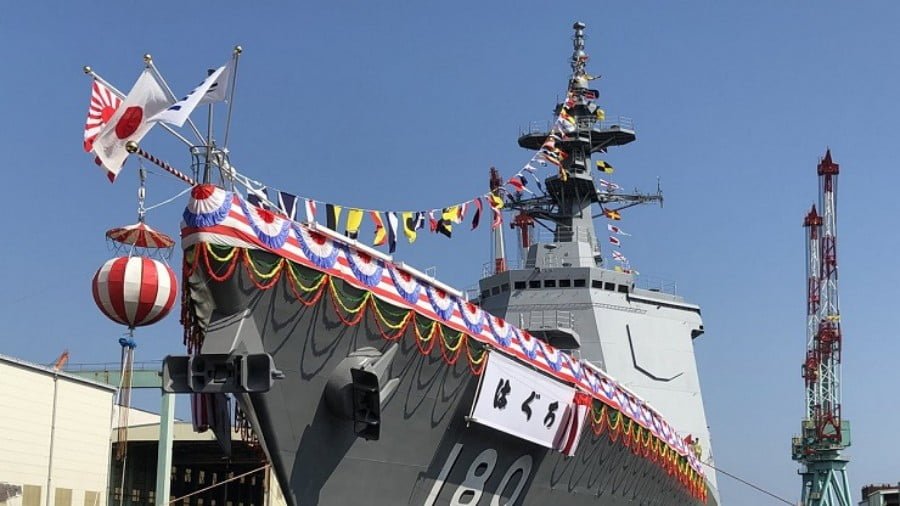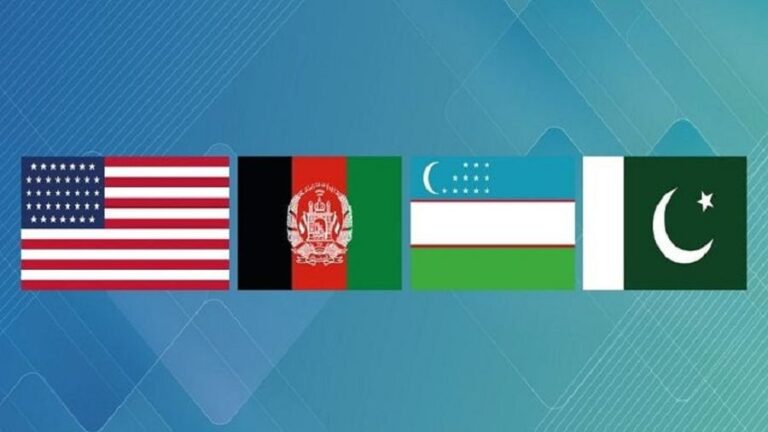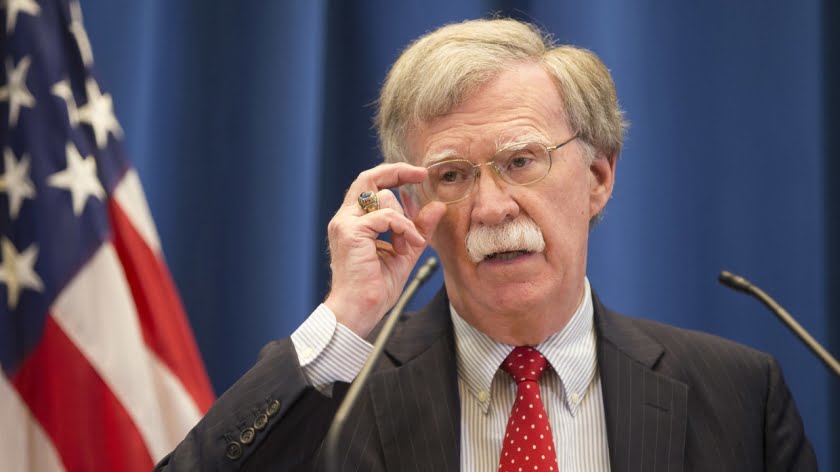How and Why is Japan Expanding its Influence in the Indian Ocean?
Many political scientists could not but notice and weigh in on a trend on the global arena – Japan is not particularly quickly yet steadfastly gaining a foothold in the Indian Ocean (and not only in the regions of the Middle East and North Africa). This process appears to be shaping, in a gradual manner, the nation’s comprehensive Indian Ocean strategy with its fairly long-term goals. So what is behind this move by Japan into this fairly distant from its own shores region? What is driving Japan in this direction and what goals has it come up with for itself? And finally, what means is Tokyo using to realize these aims?
The author must admit that the answers to these questions from experts from different countries are fairly diverse. However, their opinions on a couple of points are, in fact, very similar because they are blatantly obvious. The first issue: Japan is a highly developed nation that lacks natural resources, which makes it dependent on external deliveries of oil and other supplies from the Indian Ocean region. Hence, in order to ensure prosperity in its socio-economic sphere, Tokyo has always viewed two interconnected conditions as crucial:
- a) Socio-political stability in the nations where it get its resources from, which is why Japan needs to find approaches to maintain it at minimal cost.
- b) Ensuring that maritime routes used to deliver resources are secure and Japanese ships travelling via them are protected.
The second issue: it is certainly not the proverbial Chinese factor that was spoken about twenty years ago with a lack of confidence but a real threat posed by the PRC in all the spheres – economic, political and military strategic ones, which has caused a great deal of concern among most nations. It is not by chance that Japan’s Defense White Paper, issued on July 14, 2020, says that “China has relentlessly continued unilateral attempts to change the status quo by coercion in the sea area around the Senkaku Islands, leading to a grave matter of concern,” and that “in the South China Sea, China is moving forward with militarization, as well as expanding and intensifying its activities in the maritime and aerial domains, thereby continuing unilateral attempts to change the status quo by coercion to create a fait accompli”.
The document also states that “China is steadily increasing its capabilities to conduct operations in more distant seas such as the Indian Ocean in recent years”. It is a region that Japan began to express interest in as far back as the end of the 1980s because of the nation’s aforementioned resource dependence. This is why Tokyo began to “indirectly” expand its reach in the area by, for instance, supporting international peace campaigns, not participating militarily in the Gulf War, and by severing diplomatic ties with Afghanistan and warring factions after it was invaded by the Soviet Union. In November 2001, the plan that would allow Japan’s Self-Defense Forces (SDF) to take on a noncombat role in support of the counterterror effort was launched. It provided for “the use of up to six destroyers along with four C-130 Hercules transport planes, with an extension and expansion of Japan’s role possible depending on the situation”. By summer 2002, 1,380 Japanese SDF servicemen were involved in the campaign “to provide logistics, supply, transportation, and communication assistance to US-led forces”. This counterterrorism operation is said to have cost Tokyo $140 million, and it marked the start of notable changes to Japan’s global strategy. Despite Article 9, enshrined in Japan’s Constitution, stating that the “Japanese people forever renounce war as a sovereign right of the nation and the threat or use of force as means of settling international disputes”, the National Diet of Japan was fairly quick to pass the Anti-Terrorism Special Measures Law, which allowed Japan’s Maritime Self-Defense Force (JMSDF) to assist US-led troops in November 2001. Amendment of the Self Defense Forces Act in 2007 “fundamentally changed the nature of the JSDF because its activities were no longer solely defensive”. JMSDF ships could now be dispatched worldwide to protect Japanese tankers in waters around Japan, in the South China Sea and the Indian Ocean. The number of troops used for such purposes has been limited.
These factors, as well as the environment in which the Indian Ocean region became a high priority as far as Japan’s national interests were concerned, resulted in the shaping of additional directions in Tokyo’s strategy. Firstly, Japan has been encouraging India and its Navy to play a more active role in the Indian Ocean, especially in the South China and East China seas. As a result, there has been an increased level of cooperation in the defense sphere between the two countries. In November 2019, the first Japan-India 2+2 Foreign and Defense Ministerial Meeting took place. According to the joint statement at its end, “the Ministers welcomed the significant progress made in the negotiations of Acquisition and Cross-Servicing Agreement (ACSA)” and “expressed their intention to further promote cooperation in the field of capacity building in maritime security”. In June 2020, New Delhi “moved to expedite plans for basing additional military forces” at the Andaman and Nicobar Islands (ANI). India could allow naval forces of Japan and the United States, and later, of Australia and France to access its military facilities on the islands in order to “counter China’s expanding footprint in India’s sphere of maritime interest”, including the Bay of Bengal (a strategically important area serving as the gateway to the Malacca Strait).
Secondly, Japan needs to cooperate with the United States and India more closely in order to protect its own interests and those of other coastal nations. This is important for limiting China’s influence. One could say that the three nations have established an unofficial three-way alliance. Within it, there are energetic discussions on various levels and in different countries about maritime security, the battle against terrorism and cyber attacks, and measures to counteract them that take into account Beijing’s direct actions. Australia has on occasion become its fourth member. The author would like to emphasize that India has continued, in an unwavering manner, to express its willingness to collaborate in this fashion. The nation proposed and set up the Information Fusion Centre, an idea that received support from the USA, Japan, France and other nations. After signing the Logistics Exchange Memorandum of Understanding (LEMOA) with the US in 2016, India concluded several such agreements with France, Singapore and Australia. New Delhi hopes to sign a military logistics pact with Japan (and Great Britain) next. Afterwards, Tokyo may, for instance, be able to access facilities on the Cocos (Keeling) Islands, while Australia those in Okinawa or either party could use India’s military installations on the Andaman and Nicobar Islands (ANI).
Thirdly, Japan needs to become an important supplier of high tech equipment in the nations where neither China nor the United States nor India managed to do so. As a world-class innovator, Japan ought not only to export some types of armaments and equipment but also to promote its education and training methods. In recent years, Tokyo has become involved in plans to develop port infrastructure and special economic zones around it in collaboration with governments of Myanmar, Bangladesh and Sri Lanka in order to ensure freedom of navigation on maritime routes linking Asia and Africa. The author is referring to Dawei in Myanmar (in partnership with Thailand); Matarbari in Bangladesh, and Trincomalee in Sri Lanka (together with India). This will facilitate the strengthening and growth of cooperation with countries of the Indian Ocean region. And the aforementioned areas of focus are, in the meantime, becoming key within Tokyo’s Indian Ocean strategy.
Naturally, this begs the question: “What tools ensure the implementation of Japan’s strategy in the Indian Ocean?”. There are several, and they differ in importance, but they all help achieve Tokyo’s aims – to become a prominent player in the region. The counter-terrorism campaign in the Horn of Africa encouraged Japan to open its first military base abroad in the right place and at the right time, i.e. in Djibouti in 2011. Since then, the role of Tokyo (after it helped to successfully combat piracy in this part of the Indian Ocean) has been changing. From 2012 to 2017, the military base was used to support peacekeeping operations in South Sudan. On February 23, 2020, for the fourth time since 2013, Japan took command of Combined Task Force (CTF) 151. Subsequently, the SDF base was, for the most part, used to promote stability in the nations of the MENA region (the Middle East and North Africa). After China established its own military base in Djibouti in August 2017, Japan responded to the news fairly promptly by leasing 3 additional hectares of land to expand its facility and by deploying 403rd Tactical Airlift Squadron (equipped with two aircraft) to Djibouti in November 2017. Approximately 180 SDF troops are stationed at the base, which is used for JMSDF’s operations. The servicemen are responsible for protecting the facility among other duties.
Japan has been using JMSDF to its advantage in its geopolitical and geostrategic games, in which aspects associated with JMSDF involvement play an important role. Japan’s SDF are not only meant for defending territories around the Japanese archipelago as is the custom, but nowadays, for also ensuring combat readiness in the region; enhancing Maritime Domain Awareness (MDA); improving interoperability with partner naval forces, and establishing a prominent presence in the Indian Ocean. For instance, Japan made a decision to deploy the 4,650-ton Takanami-class destroyer to the Persian Gulf. This fact alone does not indicate that Japan is solely focused on this particular region but that Tokyo is using its Maritime Self-Defense Force in a novel way (even if it is still called JMSDF!). The same applies to JMSDF’s Fleet Air Force. For example, on 20 January 2020, the mission in the Middle East began with Tokyo dispatching two P-3C Orion maritime patrol aircraft (MPA) to the region.
Japan has also been an active participant of various naval exercises – bilateral ones with India or with multiple partners, i.e. Malabar, as well as others, which have noticeably increased in frequency; helped improve infrastructure on ships, and ensured set tasks became more challenging and the use of facilities on island military bases. For instance, Indian and US forces could use their P-8 aircraft for flights between the Andaman and Nicobar Islands (ANI) and USA’s military base on the atoll Diego Garcia. Australia and India can do the same between the Cocos (Keeling) Islands and ANI, located at the juncture of the Bay of Bengal and the Andaman Sea. At the end of June 2020, the India-Japan naval exercise was staged successfully. However, the COVID-19 pandemic has had its effect – the annual Malabar exercise (involving the USA, India and Japan and meant to promote increased inter-operability among these nations’ forces) has been postponed until 2021 or even 2022.
At the end of June 2020, in response to the tense situation in the East China Sea, where Chinese ships have been spotted near Japan-controlled Senkaku Islands for the longest duration since 2012, the Japanese lodged protests with Beijing. Japan’s Ministry of Defense plans “to establish a new team in charge of Indo-Pacific affairs as part of its efforts to advance a regional strategy involving the US, India and Australia”. In June 2020, Japan’s Minister of Defense “laid out plans to strengthen collaboration with India, Australia and ASEAN nations” to counter “belligerent” China and to protect sea lanes among other goals. It is quite clear that Tokyo will probably introduce other measures to deter the PRC.
With its actions, Japan has been showing the world its willingness and readiness to become a leading and active player in the Indian Ocean.







